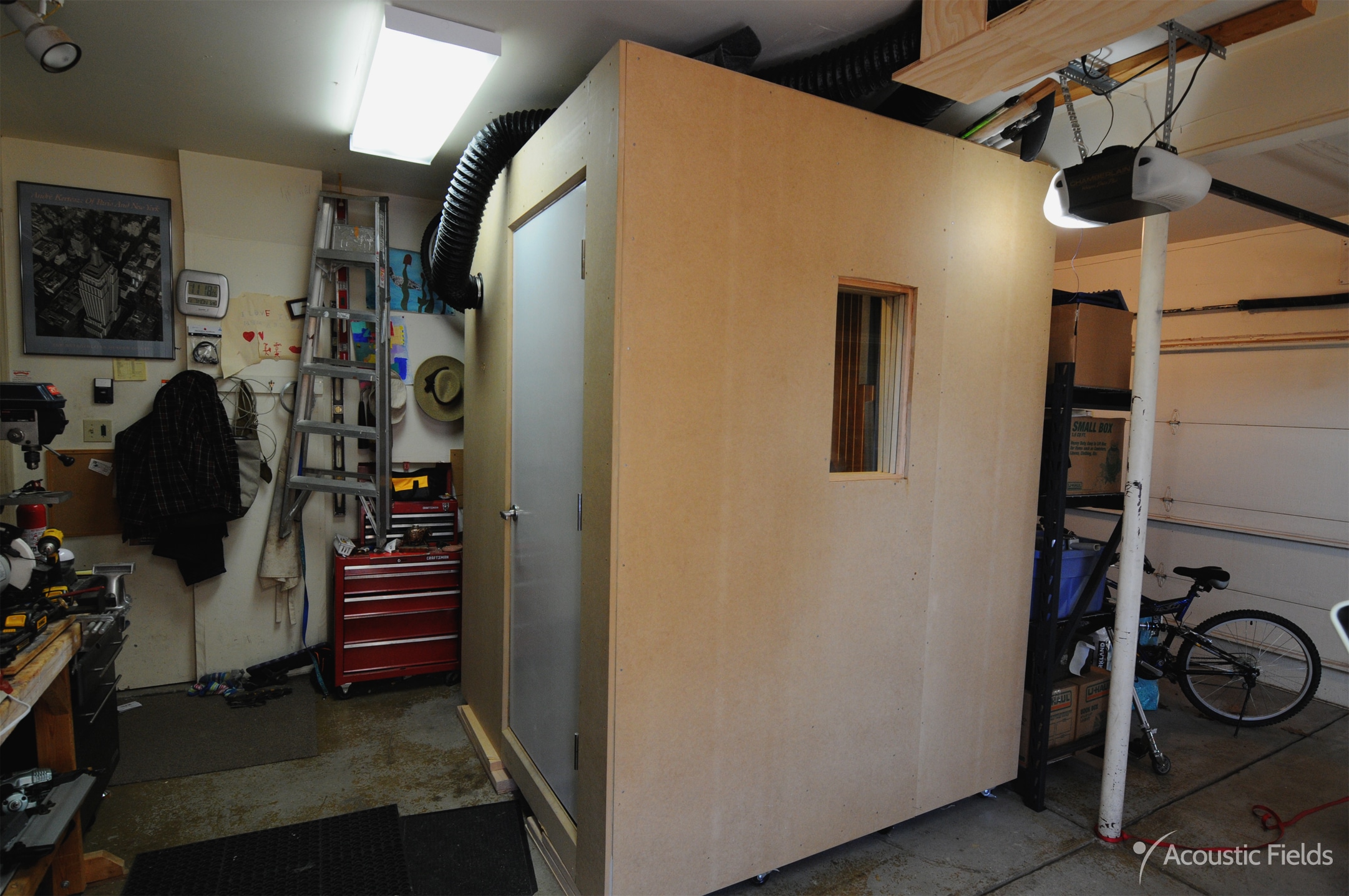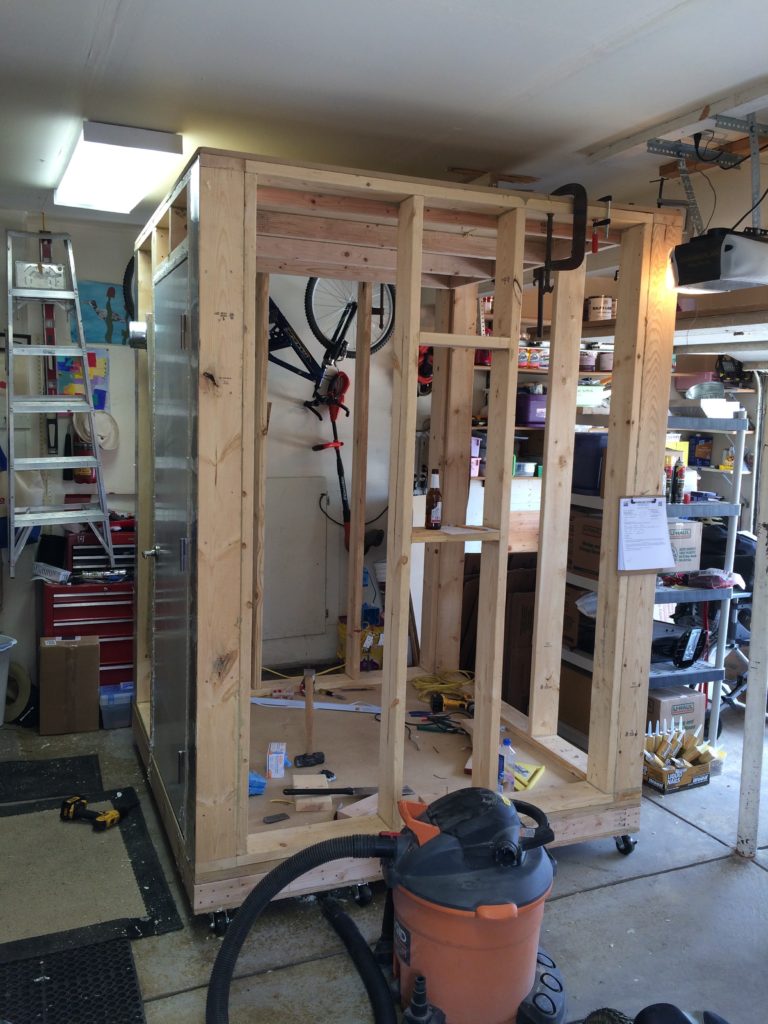
Table of Contents
Introduction
A DIY recording booth is a large challenge. Any DIY recording booth design will have to first consider the skillset of the person who is going to build the DIY recording booth. You will need a full shop with table saw, routing and dado tools along with numerous tables and adhesives. The finishing work such as painting and connecting all the surface areas will also require a completely different skill set. One can save money using a DIT approach.
However, one must also calculate the time involved in any DIY recording booth project. Our next step will be to look at what the usage of the DIY recording booth will be.. What is the intended usage? What instruments will be recorded within the room? There is a big difference between the requirements for drums versus an acoustic guitar. At Acoustic Fields, we can assist you with your design.
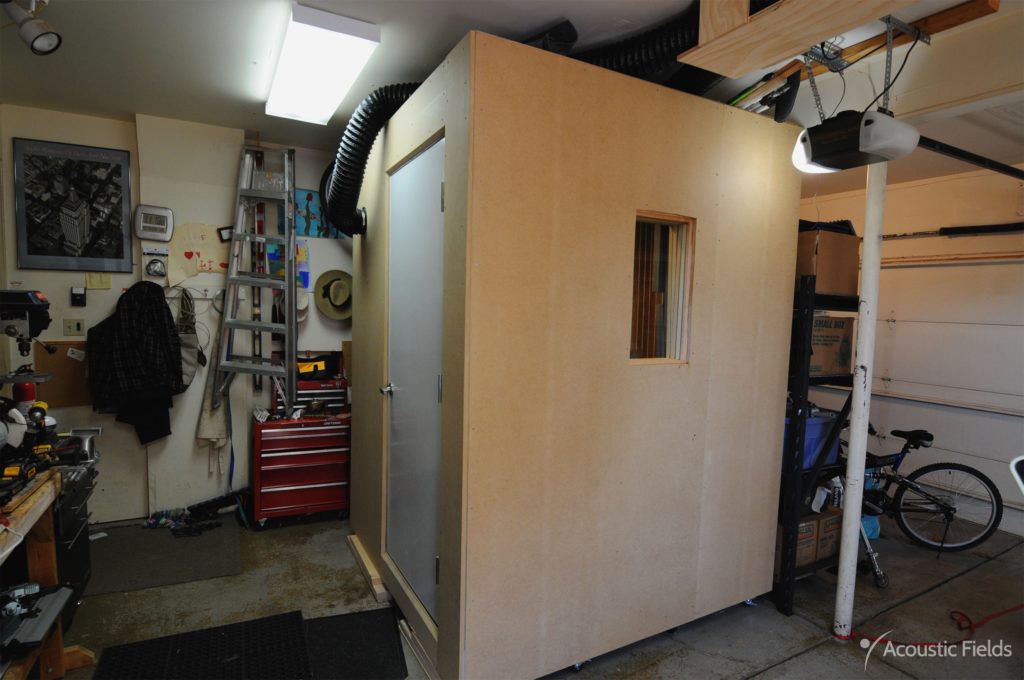
Acoustic Management in Recording Spaces
Every instrument produces energy. That energy produced covers a certain spectrum of our human hearing. Some instruments cover a wider range of frequencies along with more amplitude or strength at those frequencies. The energy range produced by drums is much broader in range. Drums go lower in frequency and have lots of amplitude or strength in those frequencies.
Managing the energy of the chosen source instrument or vocal will be the obligation of either absorption or diffusion technologies. A DIY recording booth for voice would require absorption on the four walls along with the ceiling. The reflections from the ceiling must be managed in any small space since they are the first reflections to arrive at the microphones.
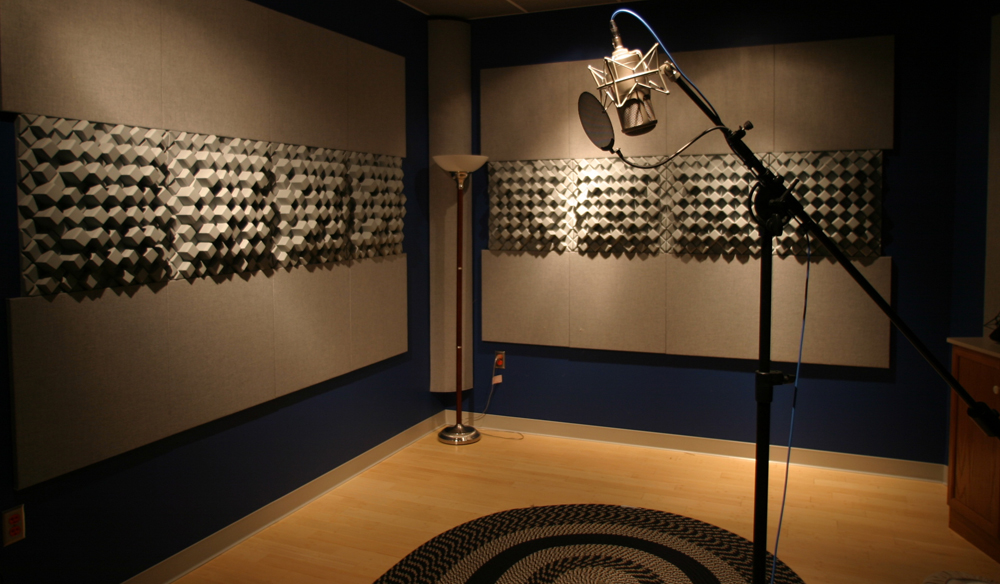
Getting High-Quality Results
Size of the DIY recording booth determines the resolution you will be able to achieve. A proper width, height, and length will go a long way to reducing the unwanted pressure issues at lower frequencies that you will have to treat with the proper rate and level of absorption. The larger the space, the easier it will be for the treatment to work well.
Once you have determined the proper size requirements, you must now focus on the wall and ceiling space you will require for any absorption or diffusion chosen to match the usage along with the acoustical issues within the room. Most lower frequency absorption for any DIY recording booth will range from 2″ – 6″ in depth across the four walls and ceiling. A good rule of thumb is a 50% surface area coverage on each of the four walls along with the ceiling.
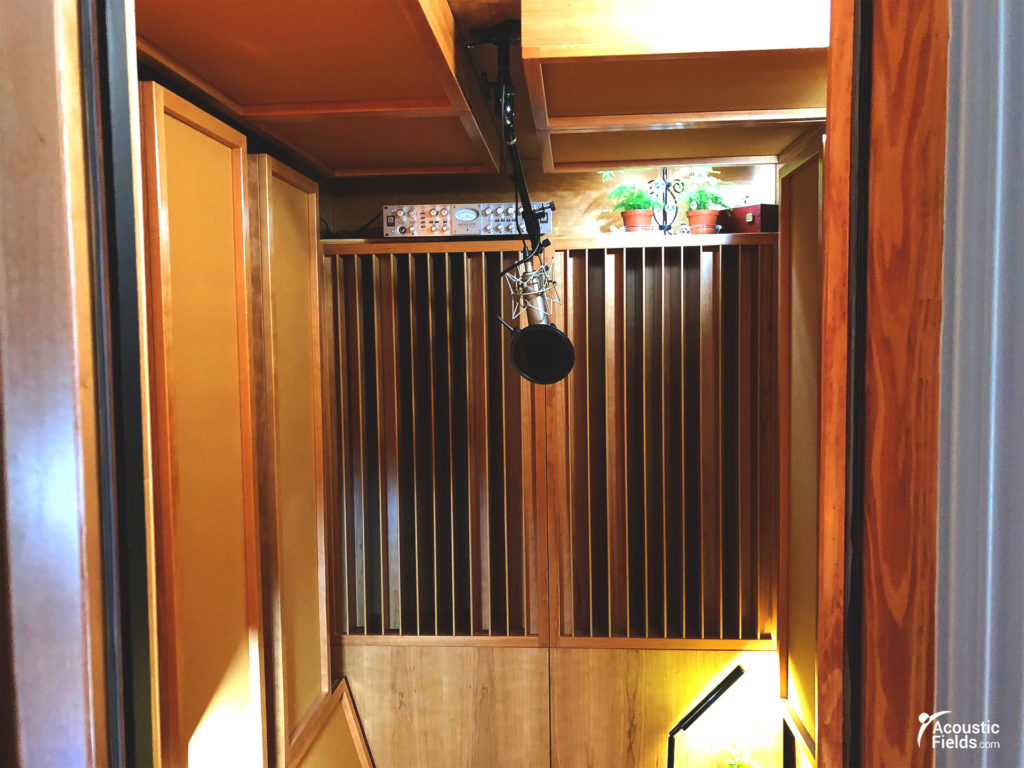
Assessing Noise Levels
Noise numbers will have to be taken within the area the DIY recording booth will be placed. The thickness of the walls along with the materials used to build the walls will all be chosen and constructed based upon how noisy the area is around the recording booth. Frequency and amplitude noise measurements will need to be taken over a seven day time period.
Noise numbers will be taken twice each day. One measurement will be taken during the loudest part of each day along with the quietest part throughout a seven day time frame. The wall construction will be based upon the frequency and amplitude exhibited on the loused part of each day.
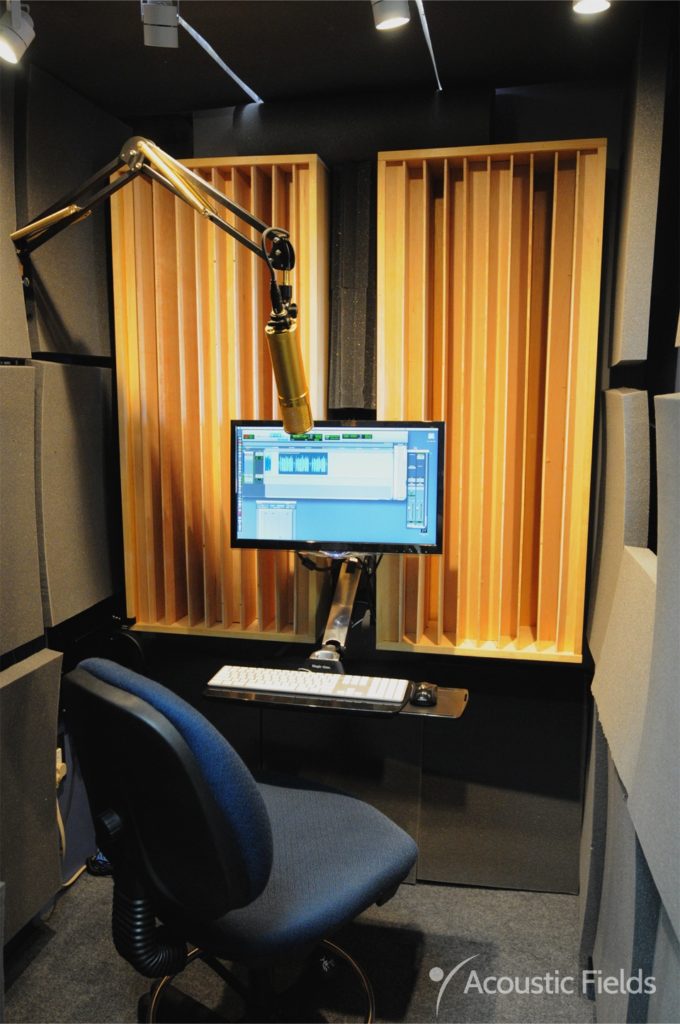
Customized Construction Techniques
Noise frequencies below 125 hz. have to have a different barrier than noise above 125 hz. Lower frequency noise requires multiple layers of materials that are frequency and amplitude dependent. As a general rule, lower frequency noise barriers have more layers of materials, the density of each layer is higher than the barrier one needs to build for noise transmission issues above 125 hz.
The construction methodology used for these material types is also different in density and material types. Noise barriers are a permanent construction with a basic room frame and thyen the proper layered sandwiches placed between each stud space.


